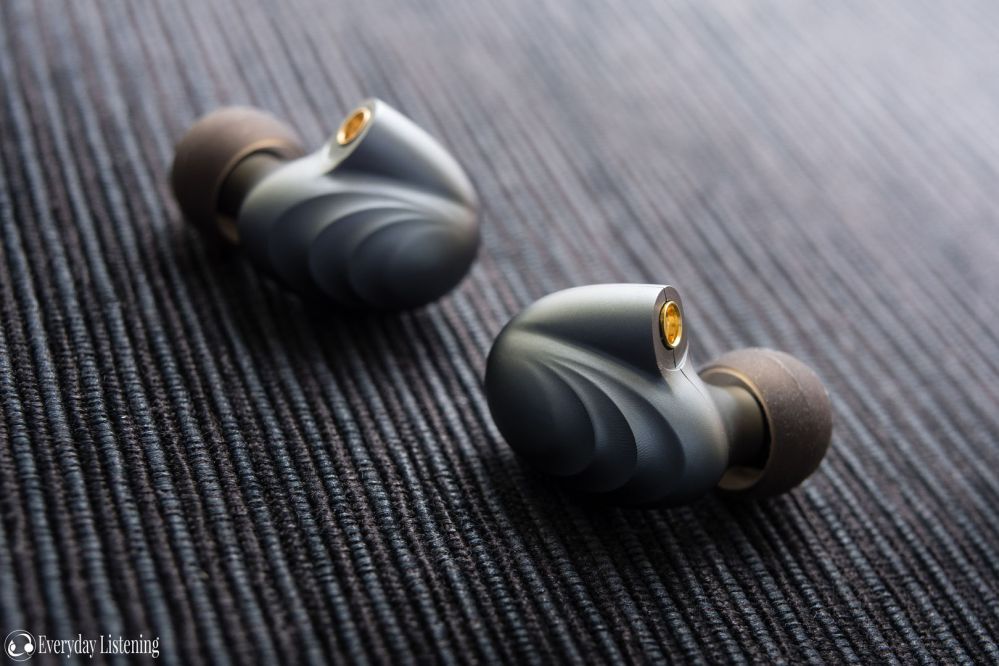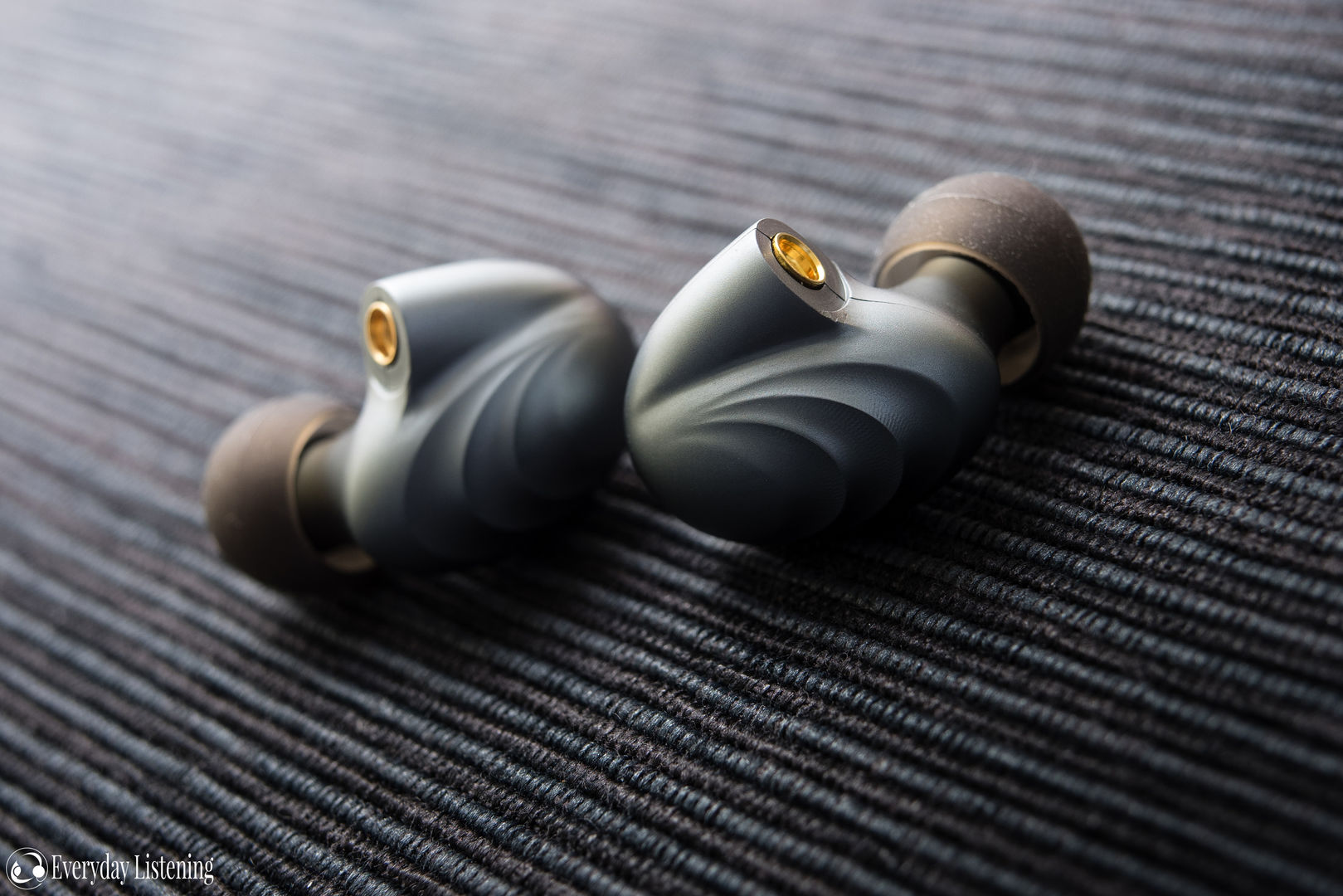Comparisons –

Fiio F9 ($100): Both are similar in design with identical ergonomics. Of note, the Pro assumes the design of later revision F9’s. Unsurprisingly, the Pro also sounds similar to its progenitor and the most immediate differences stem from the treble response which isn’t as peaked on the Pro. As a result, the Pro is more balanced, notably smoother and more bodied. Bass slam is relatively increased and lows are both fuller and more defined overall due to lesser mid-bass focus. Mids are similarly present and both carry a more clarity orientated sound. However, the Pro has greater body and sounds considerably more natural and less sibilant due to its more linear nature.
Lower mids have notably increased body, making instruments sound a lot more realistic in timbre. Within the higher-frequencies, the Pro is immediately more detailed and more separated while remaining revealing, clear and airy. Extension is improved and the highest notes are far better resolved. The Pro produces a similarly sized stage but imaging is improved and separation is just as strong. The differences aren’t enormous (and, for that matter, neither is the price jump) but they do culminate to produce a notably enhanced listen.
Simgot EN700 Pro ($150): The Simgot is a much larger earphone but one that finds a similarly comfortable fit. Neither isolate well, both sport a removable cable but the Simgot 8-core unit looks and feels more substantial while remaining practical. The EN700 Pro is the smoother, warmer and more laid-back earphone while the F9 Pro is more u-shaped and engaging. The F9 Pro delivers firmer sub-bass slam while the EN700 Pro focusses on greater mid and upper-bass body and is warmer in tone as a result. The F9 Pro has a tighter bass response with a more neutral tone possessing greater transience and higher definition. The F9 Pro has a slightly drier, more recessed lower midrange while the EN700 Pro sounds a little clearer and a little more present but also warmer and more bodied.
The F9 Pro delivers a clearer, more present upper midrange. Female vocals sound more immediate but both are very clear yet naturally voiced. The F9 Pro delivers notes with greater attack while the EN700 Pro leans towards the smoother side with a more refined treble response. The F9 Pro is unsurprisingly crisper and brings micro-details more to the fore while the EN700 Pro is well-detailed but less concise in its delivery. The F9 Pro has better treble extension and far greater air up top but it may fatigue those unacclimatized to a brighter signature. Despite this, the EN700 Pro is notably more spacious, perhaps on account of its design. Both image very well, the F9 Pro has better separation. The Fiio will suit analytical listeners, the Simgot is more musical and listenable long-term.
Meeaudio Pinnacle P1 ($200): The P1 is smaller and produces a more stable, isolating fit. It has a solid removable cable and can be worn both cable up and down. The Meeaudio pursues a similar brighter tuning but it is less linear than the F9 Pro and slightly more engaging. Sub-bass extension is better on the F9 Pro and sub-bass impact is greater. The P1 produces a notably warmer mid-bass response yet it is tight, agile and well-controlled, delivering more defined notes than the Fiio with greater punch. Lower mids are more scooped on the P1 but both are similarly clear and defined. The P1 sounds slightly more organic due to its increased warmth. Upper mids have similar presence but the F9 Pro has greater clarity at the cost of realism where the P1 is more refined and nuanced in its delivery. The P1 has a similarly boosted lower treble response, it isn’t quite as bright as the F9 Pro, but also isn’t as linear into the higher frequencies.
As a result, they both retrieve similar details with similar aggression, the P1 has perhaps even greater attack but this does comprise texture and realism. The P1 smooths off above again, like the F9 Pro, and both extend very well. That said, the F9 Pro is more linear and resolving within the upper registers. The P1 has a wider stage than the F9 Pro while the Fiio has more depth. The P1’s greater speed and midrange resolution grant it with similarly accurate imaging, but the more vivid Fiio does separate a little better. Both are incredibly resolving earphones considering their asking price, the P1 has superior ergonomics and sounds a little more natural within its midrange while the F9 Pro is more resolving up top.
1More Quad Driver ($200): The 1More is more meticulous in its construction but the F9 Pro holds a large ergonomic and isolation advantage. It also has a removable cable that the Quad Drive lacks. The 1More Quad Driver is warmer, more bodied and darker throughout. It has more bass emphasis with a tighter sub-bass impact mated to larger mid-bass slam, imbuing its presentation with warmth and body. The Quad-Driver also has greater upper bass elevation, it sounds tubbier, slower and less defined but also denser and more impactful. Lower mids are warm yet well-defined on the 1More, they are a little more present than the F9 Pro but lack the same clarity and transparency. Upper mids are very different, the 1More is darker and thicker, female vocals are far more laid-back but still possess nice layering and resolution.
The F9 Pro is more forward with far greater clarity and aggression into its lower-treble. The Quad-Driver has a considerably more laid-back lower-treble response that sounds crisp but lacks a lot of attack and foreground detail in comparison to the Fiio. The 1More has a spiked middle treble that can sound a little tizzy where the F9 Pro is more linear. The F9 Pro has better extension despite its lower driver count and treble is considerably more resolving and defined than the 1More overall. Both construct a large stage, the Fiio is a little larger though the 1More sounds very multidimensional, quite a unique trait to this earphone. On the contrary, the clearer, more neutral Fiio separates a lot better. The Fiio is easily the more technical earphone but the 1More’s smoother sound is less fatiguing and it has a more standard fit.
Verdict –
Though almost identical on the surface, some small but very intentional tweaks here and there produce a considerably more compelling experience than previous models. With slightly updated cosmetics and a more practical MMCX solution, the new Pro is also more pragmatic than ever before. The biggest upgrades no doubt arise in listening where the Pro’s wider band treble emphasis and more balanced, linear tuning create a notably more discerning listen. And despite their increased price, the Pro ends up being far better equipped than the regular F9 to challenge similarly priced competitors, representing a fine step up from the heavy hitters in the $100 category.

Because I have no hesitation donning the F9 Pro one of the most technically impressive earphones I’ve heard around this price; achieving clarity through resolution, separation and air through extension and engagement through transience rather than relying on unnatural peaks and troughs. Of course, the F9 Pro isn’t without its issues, they still don’t isolate especially well, their tubbier housings aren’t perfectly comfortable and their revealing signature comes at the cost of outright realism and some fatigue over time, but Fiio’s latest competes head-on with some highly regarded earphones one price class up.
Verdict – 9/10, The F9 Pro, though still bright and aggressive, isn’t quite so analytical as its predecessor with hints of additional body, warmth and smoothness soothing the aggression of its revealing tonality. It is not only a resolving earphone but an engaging one, just don’t expect an absolutely natural or musical presentation.




9 Responses
Can you compare them to rose mini 2? I was wondering which one has greater detail and better resolution, but I’m worried that F9 Pro will have too recessed mids for me.
How does the F9 Pro compare to the Fiio FH1? I love techno and electronic music so I think the FH1 may be perfect for me especially since it costs half the price.
It is similar to TFZ King the way you describe the sound. I’m surprised you didn’t put up a comparison for those.
Is there a way to tell which tips are the bass enhanced, the standard, or the brighter ones?
Based on the comparison of the Kinera H3 to the Fiio F9 (non-Pro), and then the comparison of the F9 to the F9 Pro, I am assuming that while the F9 Pro is an overall improvement over the F9, if I’m currently happy with my H3’s I shouldn’t really feel the need to rush out and buy the F9 Pro’s?
Please compare this and RHA T20..this was a great review.
please make a comparison between these and altone 200.
also considering altones price and same sound-wise character, is there a better iem in general???
(also i found altones superb comparing them to fiio ex1ii using my fiio x3ii!!!)
merry Xmas!!!
Hi KH,
The P1 and P2 are pretty similar, but the P2 is warmer with more bass extension and lower-midrange presence. It is a bit less refined than the P1 and treble isn’t as extended so it isn’t quite as comparable to the F9 Pro on a technical level, but both are tonally in the same ballpark. I provided more detailed comparison to the P2 in my regular F9 review, many of these comments can extend to the F9 Pro.
Thanks,
Ryan.
How is F9 compare against Pinnacle P2? When I read the comparison, I feel like I am reading the comparison between P2 and P1 as well. How similar or different between F9 and P2.
As usual, I enjoy reading your reviews. Please keep up the great work.